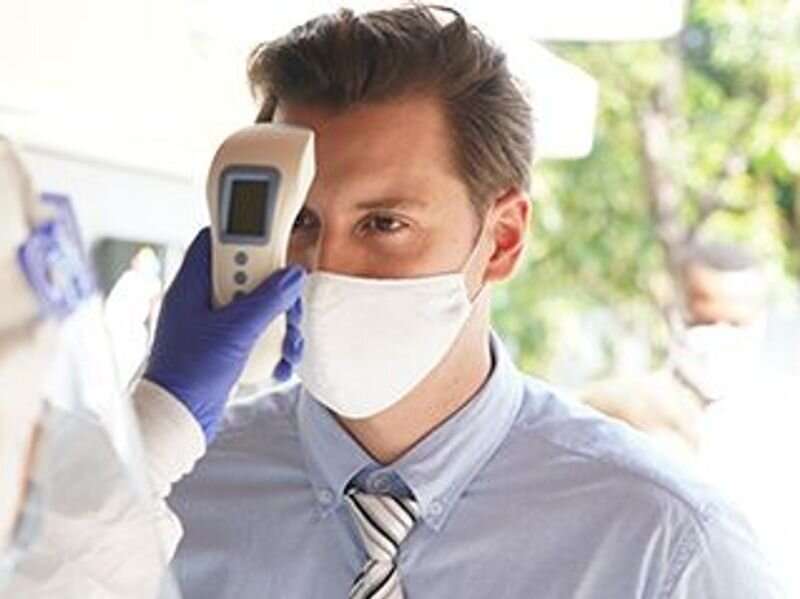a person with a mask on being checked for his temperature
(HealthDay)—How likely you are to become infected with coronavirus can depend on how much virus you inhale, where those particles land in your respiratory tract, and even the weather, researchers report.
Researchers from many institutions are working on a National Science Foundation-funded project to develop a mask with a reusable respirator that captures and kills the COVID-19 virus.
As part of that effort, Saikat Basu, an assistant professor at South Dakota State University's Department of Mechanical Engineering, has developed a model that uses breathing rates to track the droplet sizes that are likely to reach vulnerable areas of the respiratory tract.
"To become infected, you must first inhale the virus, so inhalation patterns are important," Basu explained in a university news release.
Also important is wearing masks. A cell culture study from the University of North Carolina found that the upper part of the throat behind the nasal passages and above the esophagus and voice box—an area known as the nasopharynx—is the most accessible seeding zone for the virus.
In his study, Basu used digital models to simulate inhalation rates in healthy adults. He reported that droplet sizes most likely to reach that zone were larger than expected.
"Most masks would block out these droplet sizes, so wearing a mask is very useful," Basu said. "These are also the droplet sizes that we need to make sure our new respirator design captures."
The data could also be useful in developing inhaled antivirals and intranasal vaccines that reach this initial infection site.
One negative discovery is that virus-carrying droplets can dehydrate in the air, increasing the concentration of virus particles and their potential to cause disease. This could have an impact on COVID-19 transmission this winter, when the humidity drops and triggers a faster rate of dehydration of the droplets.
"The droplets being inhaled after dehydration in the external air carry a larger viral load," Basu noted.
To estimate the threshold for infection, Basu looked at reports on a May superspreader event among a choral group of 61 people in Skagit Valley, Wash., where one symptomatic person transmitted COVID-19 to 52 other members.
To estimate probability that a droplet would contain at least one virus particle, Basu used a study on the amount of virus in the sputum and mucus of COVID-19 patients and accounted for dehydration. He conservatively estimated about 300 virus particles as the threshold for infection. Typically, an inhaled viral infection requires 1,950 to 3,000 virus particles.
"The fact that the number of virus particles needed to launch the infection is in the range of hundreds is very remarkable, and shows how contagious this particular virus is," Basu said.
The results from the droplet inhalation modeling were screened by the scientific team at medRxiv. The corresponding research manuscript is undergoing peer review at the journal PLOS One.
Provided by South Dakota State University, news release, Sept. 28, 2020
Copyright © 2020 HealthDay. All rights reserved.























